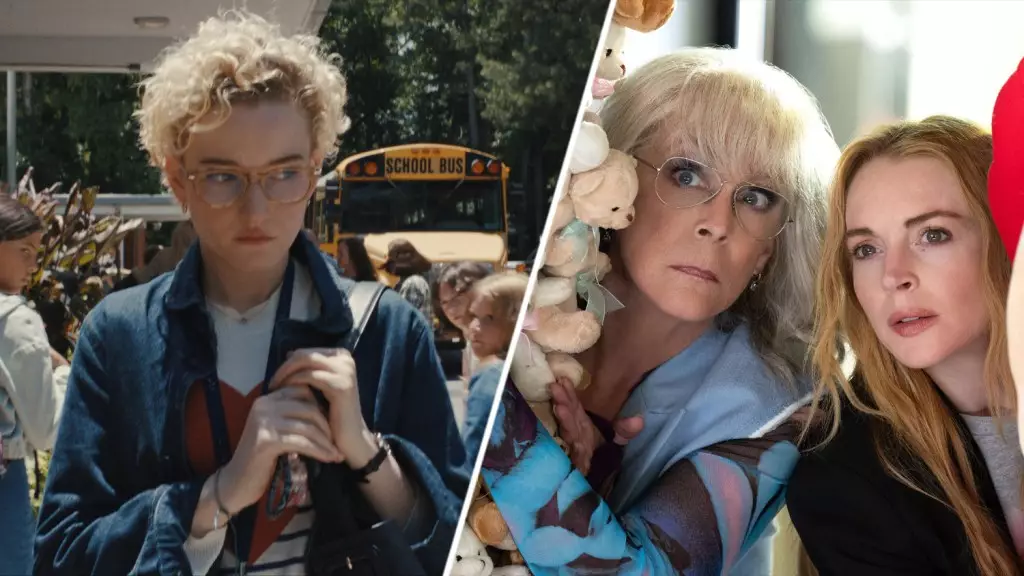As summer winds down, Hollywood’s box office landscape is once again a battleground, with two formidable titles poised to claim the weekend’s top spot. On one side, a fiercely anticipated horror offering that has critics and audiences buzzing; on the other, a nostalgic remake aimed squarely at the women’s demographic and fans of family-friendly entertainment. It’s more than just profit on the line—it’s a reflection of Hollywood’s evolving appetite for diverse content and audience segmentation. However, I remain skeptical about who truly holds the upper hand in this high-stakes rivalry. This isn’t merely a contest of numbers, but a contest of cultural resonance and market influence, and the outcome might surprise even the most seasoned analysts.
A Clash of Strategies: Horror Versus Nostalgia
The horror film, helmed by an emerging director and boasting a mysterious premise involving school children escaping a sinister force, represents Hollywood’s ongoing fascination with dark, enigmatic storytelling. With an estimated mid-$30M opening, possibly reaching $40M, it capitalizes on the R-rated market, especially leveraging premium large formats like Imax and PLF screens. Its critical reception is remarkably positive, holding a 100% rating on Rotten Tomatoes, a rarity in the horror genre, and indicating that the film’s quality might be driving strong word-of-mouth.
In stark contrast, Disney’s “Freakier Friday”—a modern remake of the beloved 2003 family comedy—targets a very different segment: young women aged 17-34, teens, and family audiences in general. Despite its nostalgic appeal and renowned cast, including Lindsay Lohan and Jamie Lee Curtis, it faces a more uncertain opening, expected to hover around $30M. Its appeal is rooted in familiarity and relatability, particularly among middle-America audiences who cherish PG-rated, light-hearted fare. Yet, its critical score is notably lower at 79%, and history shows that such remakes often struggle to surpass the original’s initial success.
What’s interesting is the disparate strategies at play: the horror film banks on exclusivity and spectacle, often drawing in passive viewers in premium formats, whereas the remake relies heavily on nostalgia and the strength of existing fan bases. While the horror’s critical acclaim and format advantages give it a potential edge, the family film’s broad demographic appeal can’t be dismissed. The truth, however, is that each film’s success hinges on vastly different predictors—critical reception for the horror versus fan familiarity and market nostalgia for the remake.
Market Realities and Audience Preferences
Examining current presale figures and theater counts offers a deeper insight into the story behind the numbers. “Weapons,” with a huge investment from New Line, is booked in nearly 4,000 theaters, including premium formats like DBOX and PLFs. Its pre-sales are reportedly robust, especially at AMC, suggesting strong initial interest, especially among adult horror fans and format enthusiasts. The film’s wider release in IMAX could give it a noticeable advantage in early momentum, which in turn influences other factors such as social media chatter and word of mouth.
Meanwhile, “Freakier Friday,” with previews coinciding with the 22nd anniversary of its predecessor, is aimed at capturing the hearts of women aged 17-34—a demographic historically crucial for holiday and summer success. Its presale volume stands at around $3M, indicating cautious optimism rather than guaranteed success. The original “Freaky Friday” scored high with critics and audiences, but remakes often face skepticism, especially when their originality is perceived as compromised.
This raises a fundamental question: can a remake, even with nostalgic popularity, outperform a fresh, critically acclaimed horror movie in today’s fractured media environment? Given the different audience segments and marketing strategies, the odds favor the horror film in terms of breaking records, yet the timeless nature of family-friendly comedies cannot be overlooked. It could find its niche among suburban theaters, rural towns, and demographics that prefer PG-rated outings.
Critical Acclaim vs. Audience Loyalty: Who Will Dominate?
Critical reception plays a role here, with “Weapons” garnering full approval from critics, a rarity in horror, which could translate into sustained box office performance and longer theatrical runs. The more favorable reviews often sway casual viewers and franchise fans alike, especially in an age where social validation influences theater-going habits.
In contrast, “Freakier Friday” is unlikely to attract significant praise from critics, but its audience loyalty is well-established. Its appeal is less about innovation and more about comfort, familiarity, and shared cultural experiences. However, in a marketplace increasingly dominated by films that offer novel experiences or critical acclaim, reliance solely on nostalgia can prove shortsighted.
Ultimately, the film that can adapt quickly to social chatter—whether through viral marketing, influencer endorsements, or strategic release tactics—will have a better chance to outshine the competition. The landscape of summer box office is no longer predictable by raw numbers alone; it hinges on cultural relevance, audience engagement, and how well each title navigates today’s fragmented entertainment ecosystem.
Both films embody the changing dynamics of modern cinema—one representing the push for fresh, bold storytelling, and the other the enduring power of familiarity and nostalgia. But from a strategic standpoint, the true victor will be the film that demonstrates resilience in attracting targeted audiences while leveraging premium formats and effective marketing. And truth be told, in this eye-opening race, expectations should be tempered; neither film guarantees a blowout success, yet both reflect Hollywood’s evolving ability to balance novelty with tradition amid an increasingly complex landscape.

